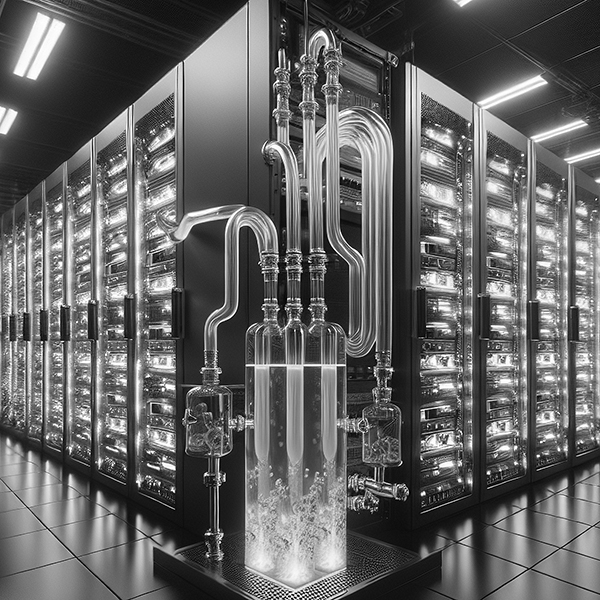Introduction
Innovative Coolant Fluids coolant technology has seen significant advancements, driven by the need for more efficient heat management solutions and a growing focus on environmental sustainability. Traditional coolants, while effective, often pose challenges related to toxicity, greenhouse gas emissions, and limited performance in high-demand applications. Innovative coolant fluids, such as bio-based, nanofluid, and low-GWP options, are emerging as powerful alternatives. These modern coolants not only enhance heat transfer but also align with stricter environmental regulations, making them invaluable for industries seeking eco-friendly and cost-effective solutions.
Bio-Based Coolants
Description: Bio-based coolants are developed from renewable resources, typically plant-based oils, which have a lower environmental impact compared to traditional coolants. They are biodegradable, reduce dependency on petroleum-based products, and are less toxic if accidentally released.
Advantages:
- Lower Toxicity: Compared to conventional ethylene glycol-based coolants, bio-based fluids are less harmful if spilled.
- Enhanced Thermal Stability: They often exhibit higher thermal stability, which helps in maintaining effective cooling performance across varying temperatures.
- Renewable Sources: Being derived from renewable sources, these coolants help reduce the environmental footprint.
Applications: Widely used in agriculture and construction equipment, bio-based coolants are also being adopted in automotive and industrial applications due to their environmental benefits and compatibility with many existing cooling systems.
Nanofluid Coolants
Description: Nanofluids are created by suspending nanoparticles (like aluminum oxide, copper oxide, or carbon-based materials) in conventional coolant fluids. The nanoparticles improve the heat conductivity of the base fluid, thus enhancing overall cooling efficiency.
Advantages:
- Higher Heat Transfer: Nanoparticles increase the surface area for heat exchange, enabling faster and more efficient cooling.
- Compact System Design: Due to improved efficiency, systems using nanofluids can be smaller, which is beneficial in space-constrained environments.
- Reduced Fouling: The particles can help reduce fouling by preventing large-scale buildup on surfaces, extending the equipment’s lifespan.
Applications: Nanofluid coolants are particularly useful in high-demand cooling applications, such as electric vehicles (EVs), data centers, and advanced manufacturing machinery, where heat dissipation is critical for performance.
Ionic Liquid Coolants
Description: Ionic liquids are salts that remain in a liquid state at low temperatures, unlike typical salts. They possess a unique set of properties, such as high thermal stability, low flammability, and negligible vapor pressure, which make them suitable for specialized cooling needs.
Advantages:
- High Thermal Conductivity: Ionic liquids can manage high-temperature heat exchange without breaking down, ideal for high-stress environments.
- Low Evaporation Loss: These coolants have almost no vapor pressure, minimizing the risk of evaporation and reducing coolant loss.
- Non-Corrosive: Many ionic liquids are less corrosive to metal parts compared to traditional coolants, which prolongs equipment lifespan.
Applications: Ionic liquid coolants are especially useful in fields like aerospace, high-performance computing, and nuclear cooling systems, where both high stability and performance are essential.
Low-GWP (Global Warming Potential) Refrigerants
Description: Low-GWP coolants are specifically designed to have a minimal impact on global warming if they escape into the atmosphere. This is crucial as traditional refrigerants like hydrofluorocarbons (HFCs) have been linked to climate change due to their high GWP.
Advantages:
- Reduced Greenhouse Emissions: Low-GWP coolants contribute significantly less to global warming compared to older refrigerants.
- Compliance with Regulations: Many regions now regulate the use of high-GWP refrigerants, making low-GWP coolants essential for meeting environmental standards.
- Improved Lifecycle Impact: Lower environmental impact throughout their lifecycle, from production to disposal.
Applications: Low-GWP refrigerants are popular in HVAC systems, refrigeration, automotive air conditioning, and other applications where coolants are routinely used and emissions must be minimized.
Phase-Change Coolants (PCMs)
Description: Phase-change materials (PCMs) absorb heat as they change from a solid to a liquid and release heat when they revert to a solid state. This property is exploited in cooling systems to manage temperature fluctuations without relying heavily on active cooling.
Advantages:
- Efficient Energy Storage: PCMs can store and release thermal energy as needed, making them highly efficient.
- Ideal for Fluctuating Demands: Ideal for applications where cooling demands change over time, as PCMs can regulate temperature passively.
- Reduced Energy Consumption: These materials can reduce energy consumption by offsetting peak cooling loads.
Applications: PCMs are widely used in electronics cooling (especially for data centers and EV battery packs), building climate control, and cold-chain logistics, where maintaining a specific temperature range is essential.
Conclusion
Innovative coolant fluids are paving the way for a more sustainable and efficient approach to temperature control across a wide range of industries. By improving energy efficiency, reducing environmental impact, and increasing equipment longevity, these advanced coolants address both operational demands and ecological concerns. As industries continue to adopt these new technologies, they stand to benefit from improved performance and environmental stewardship, ensuring a cooler, greener future.

